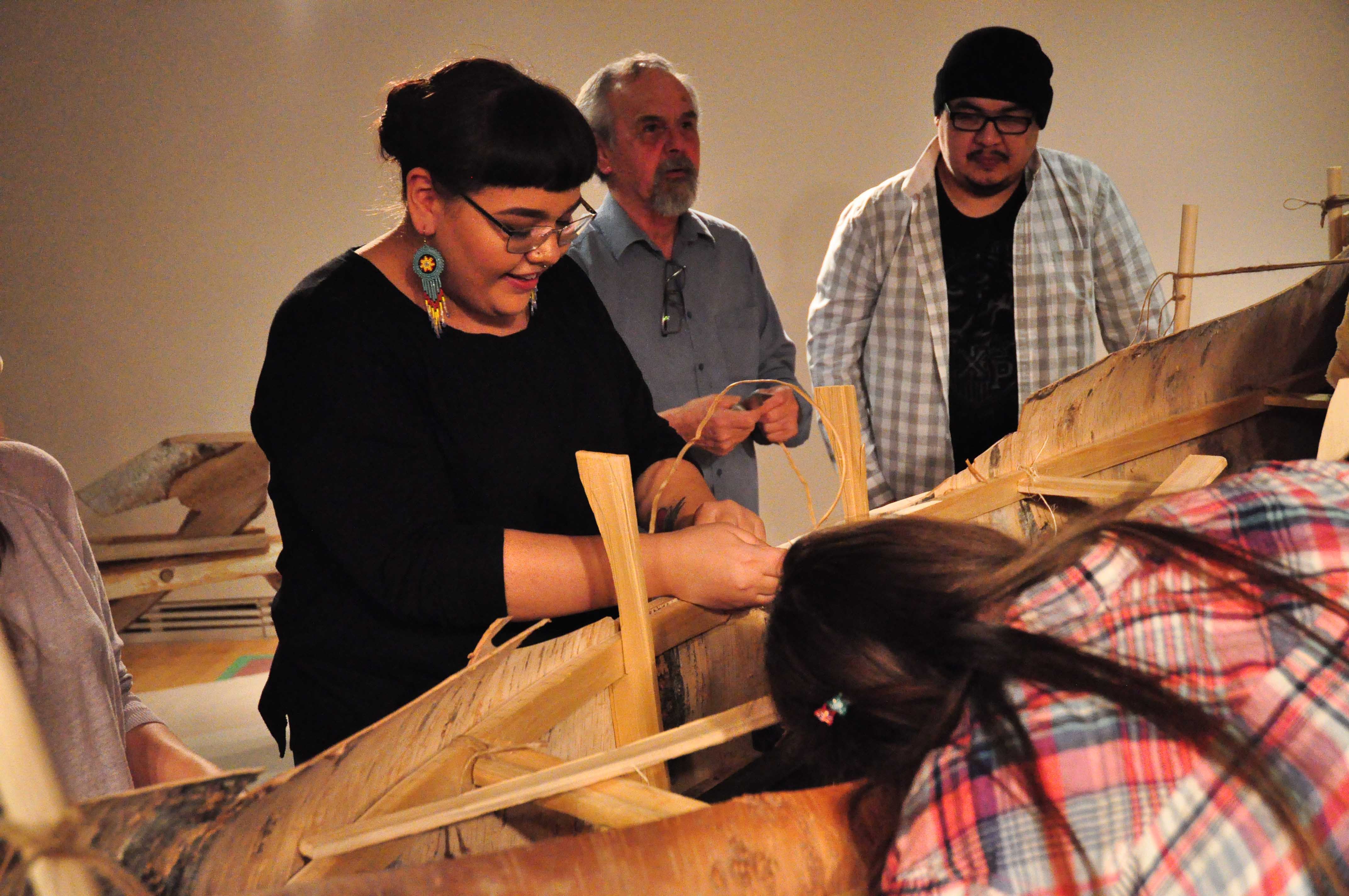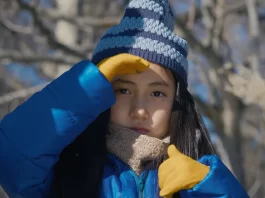Carleton students are working on constructing a birchbark canoe as part of a project to mark the university’s 75th anniversary.
The Carleton University Art Gallery (CUAG) and the Centre for Aboriginal Culture and Education (CACE) are collaborating on the project. Students have been meeting on Wednesday evenings over the last month to work alongside Pinock Smith, an Algonquin craftsman from the Kitigan Zibi First Nation in Quebec.
The canoe at its current stage can be viewed in the art gallery, and upon completion will be tested in water before being installed into the university’s library.
Sandra Dyck, the director at the CUAG, described Smith’s teaching style to the students as “low-key” and “encouraging.” She said it’s an experiential learning process, where he’ll give instructions then encourage students to try it for themselves.
“He’ll show us a technique and encourage us to learn how to do something,” she said. “Of course, he makes everything look incredibly easy.”
According to Dyck, the students involved in the project have been having a “wonderful” time.
“It’s been incredible,” she said. “I’m pretty confident I can speak for everyone to say we have a great time together.”
Summer-Harmony Twenish, an Algonquin first-year art history student from the Kitigan Zibi First Nation said the project has allowed her to “reconnect with her community.”
“My grandmother used to work a lot with birchbark, so it was a nice way to pay homage to her,” Twenish said.
Gabby Richichi-Fried, a fourth-year Indigenous and Canadian studies student said the project is great for “building relationships” between Indigenous and non-Indigenous students.
“I think that opportunities like this are just amazing tangible ways for students and staff to start this process of building relationships, and understanding the land we’re on,” Richichi-Fried said.
Dyck and Smith had previously worked together during CUAG’s “Walking with our Sisters” project in the fall of 2015.
Dyck said she’s interested in honouring “diverse forms of knowledge,” such as traditions Smith would have learned from his community.
She added this is a good way to mark Carleton’s 75th anniversary, as it brings people together to work on projects as a school, and it’s a way to acknowledge the school’s location on unceded Algonquin territory.
As part of the project, Smith said he has been not only showing students how to build a canoe, but how to do it using traditional tools and techniques.
These are techniques that Smith had seen growing up, as people in his community often made “whatever they needed,” such as snowshoes, toboggans, clothes, and canoes. He said he learned his craft through what he calls “the school of life.”
“It was my way of life,” he said. “It’s part of my culture, and I was fortunate enough to be exposed to it when I was young.”
Smith added it’s important to him that students realize the “ingenuity” and “simplicity” of traditional Indigenous canoe designs, and the “intelligence” of his ancestors for the creation of these designs.
“Sometimes simple is better than the complicated life we have today,” he said. “These things have simple designs, they come from nature, and I enjoy showing people that sometimes simple is good.”
Smith said he enjoyed opportunities to share parts of his culture with others, and run workshops where he teaches people how to build everything from drums to snowshoes to toboggans, as well as canoes.
Although he noted his community doesn’t build its own tools as much as they did when he was growing up, he’s proud to have learned these techniques when he did.
“I’m making my canoe the same way my ancestors did,” he said.
– Photo by Annie Langford




